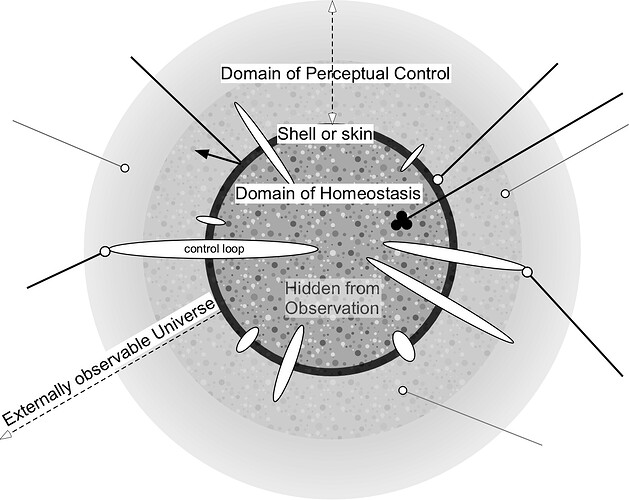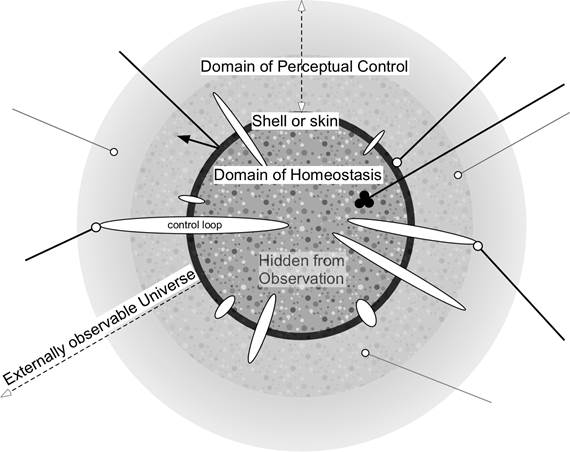Sure, Martin, but if one bypasses mathematical correctness, ignores the rules of evidence, and fails at logical reasoning, no matter how one BELIEVES (!!) “PCT to be essentially not only correct, but necessary”, what is said and done is not science anymore not eeven philosophy but some sort of pseudo-scientific religious email jousting which, honestly, is what CSGnet looks like most of the time.
···
On Tue, Nov 7, 2017 at 5:41 AM, Martin Taylor mmt-csg@mmtaylor.net wrote:
[Martin Taylor 2017.11.06.08.40]
On 2017/11/6 2:51 AM, Alex Gomez-Marinwrote:
... the whole problem with most of PCT attitudenow is that since you know from god that you are right, …
It is several years since I last commented on my reasons forbelieving PCT to be essentially not only correct, but necessary,
given the scientific environment in which researchers have lived for
the last 400 years or so – a belief that if one branch of science
seems to contradict another, something is wrong.Classical physics of the Newtonian kind may not account foreverything we observe, but so long as we avoid quantum and
relativity-level issues (two areas of science that do seem to
produce contradictions with each other, but not with low speed
human-scale energy Newtonian laws), we can take the laws of
thermodynamics as a basic truth. One direct consequence of those
laws is that in the absence of a through energy flow, no structure
can survive indefinitely in an environment that is less organized
than itself – "* In a closed system, entropy increases toward a
maximum* ". In other words, an intake of energy and a later
export of the same amount of energy in less structured form is an
absolute requirement for the maintenance of structure, whether the
structure is alive or not.We know that by way of feedback, energy flows can result in“self-organized” structures such as vortices, and that all living
things are self-organized structures. But we must go beyond simply
saying “self-organized structure”, and consider how our structures
survive the assaults from the environment that are the reasons why
structures decay and deteriorate without through energy flows.
Boltzmann and Gibbs provided answers that were precise in quite
disorganized systems such as gases, but their argument has much
wider applicability. In simple terms, the argument is that if some
complex thing breaks, random effects are highly unlikely to put it
back together as it was.There are two ways, passive and active, to deal with situations inwhich something might break because of influences from outside.
Passive ways include shields and shells that separate the structure
from the environment, splitting the Universe into “the structure”
and “the rest of the Universe”, or into “inside” and “outside”.
There are two kinds of active process, one being to act on the
environment to prevent damage before it happens, while the other is
to repair the damage. The latter is the domain of feedback processes
we generally call “homeostasis”, while control does both, though
mainly prevention. The self-organizing energy flow (food in, heat
and waste out) is manifest in the processes of both control and
homeostasis."Homeostasis" versus "control": I use these terms slightlydifferently, though it might be legitimate to consider them as
examples of the same process distinguished only by where the
perception and environmental correlate exist, saying that perceptual
control happens when the correlate is in the external environment,
homeostasis when they are both inside the shell or skin. I don’t
make that distinction. Instead, I treat homeostasis is the result of
generic negative feedback loops that as completely within the skin
bag, no matter how long the loops may be or how complex their
feedback structure.Perceptual control, on the other hand, I take to occur when thestate of one internal variable is brought to some specified value
and maintained near that value but directed actions on some other
variable, which is typically but not necessarily in the external
environment. Perceptual control has a necessary asymmetry in the
loop, in that the energy transfer from the “other variable” to the
controlled perception is much less than in the other direction, thus
ensuring that entropy is exported rather than imported. Homeostasis
does not require such an asymmetry.This Figure suggests one possible way of looking at the division ofresponsibilities among homeostasis, the shell or skin, and
perceptual control. “Incoming” lines represent discrete external
influences from the external environment. Those terminating in
circles are absorbed either by by perceptual control or (in one
instance) by the shell. Relatively few get through the shell or skin
to the homeostatic interior where the structure is repaired and
maintained in good condition. The figure ignores the possibility of
control loops for which both the perception and the property subject
to control action are both inside the shell or skin.Shells cannot isolate the structure entirely from the rest of theUniverse, and homeostatic processes alone might be hard-pressed to
repair all damage caused by influences from the outer world. To
support them and enable the continued existence of any complex
structure is the role of perceptual control, which can be imagined
as a diffuse active shell (grey in the figure) around the organism
that reduces the load on the passive shell or skin by decreasing the
entropy of the surrounding local environment.Perceptual control extends the region of low entropy from thestructured interior to the local region of the exterior, reducing
the structure-destroying entropy flow to the interior. Rather than
exposing the shell or skin to the full damaging influence of the
environment, the environment becomes structured in ways that reduce
the likelihood of effects on the interior that would require repairs
by internal feedback processes.In order to structure (reduce the entropy of) the local environment,the organism must be able to act on aspects of that environment. In
order to act on it in a way that increases the local structure
(decreases the local entropy), the action cannot be random with
respect to the way the environment happens to be, because random
effects by their very nature increase the local entropy. It must
move the environment from its current configuration into a
particular configuration, and that is unlikely to be accomplished by
random actions on the environment.Just perceiving and acting upon properties (aspects) of theenvironment does not necessarily reduce the local entropy, or
increase the local structure. To do that, the property being
perceived and influenced by the organism must be changed in very
particular ways, not randomly. The property must be brought to a
state that will bring the perception to some specific state or one
of a small set of states. In other words, perceptual control is
required for the survival of any organism that does more than sit
inactive inside a shell, repairing internal damage by homeostatic
processes and passively somehow taking in and exporting the energy
needed to keep those processes going.Putting this together, except in the extreme case of the inactiveorganism in a shell, thermodynamic considerations require that some
form of PCT be correct, in the sense of being a “Law of life” in the
way that “Every action has an equal and opposite reaction” is a Law
of Nature.Perceptual Control Theory. Perceptual control may be required by thermodynamic considerations,but PCT (Perceptual Control Theory ) has many possible
forms, of which the purely hierarchic (no within-level lateral
perceptual or output links) form described by Powers is just one.
Which one evolution has given us may not be the same for all
organisms. Indeed, in detail it cannot be the same for, say,
organisms that sense electric fields as it is for organisms that
don’t. But the principle that all living organisms that act on the
environment must do so in ways that on average reduce the local
entropy, reducing the probability that their shell or skin will be
breached and their structure damaged, holds, whatever the details
for a particular species or individual.In the past, for personal convenience I have divided the possibleforms of PCT into three completely arbitrary classes: (1) HPCT, the
pure form of Powers’s hierarchy as it evolved over time in his
writing, which reduces local entropy by treating individual degrees
of freedom independently; (2) Extended or augmented HPCT, which is
based on HPCT but includes elements that are not in the Powers
structure, such as vector rather than scalar perceptions, lateral
interconnections within levels, or treats the effects of signal
paths being individual nerve fibres rather than bundles that convey
discrete “neural currents”; (3) Anything else so long as perceptual
control reduces the local entropy of the environment in ways that
support the shell, such as, for example, a one-level structure of
independent perceptual controls that correspond to independent
properties of the environment. Any form of PCT is permitted by
thermodynamic considerations, but some are more efficient than
others and therefore have a better chance of surviving evolutionary
(and reorganizational) processes.In sum, I do not believe it is possible to have a science of livingthings that is not ultimately based in some form of PCT. That belief
has nothing to do with access to any god who might or might not have
been involved in constructing a Universe that works this way.Martin


